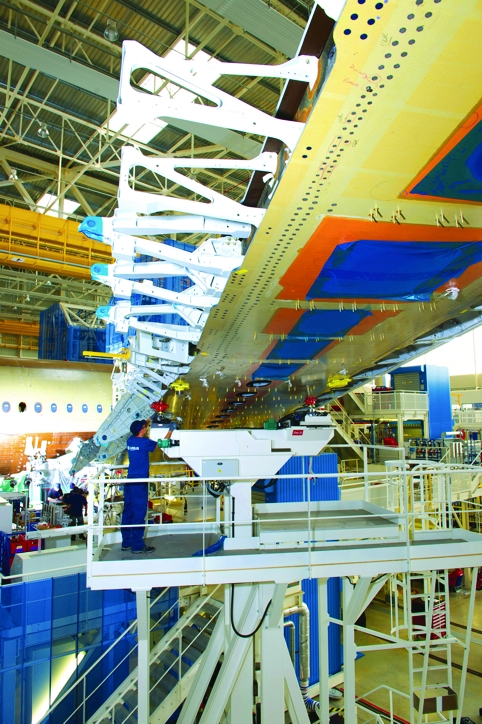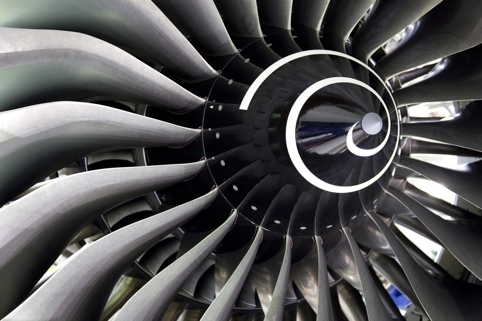If there is a part of the UK engineering landscape where the sun is shining with unequivocal brightness, with not a cloud in the sky, it is the civil aerospace sector; while defence is under squeeze, businesses in the passenger jet and helicopter markets are gearing up for a boom.

‘There is no doubt this is a very exciting time for the UK civil aerospace sector, as global demand is increasing,’ said Paul Everitt, chief executive of the aerospace trade organisation ADS. The Global Aerospace Outlook 2013 report says 27,000 new large civil airliners and 40,000 rotor aircraft will be required by 2030; much of that demand will driven by high-growth markets such as China, India and Brazil over the next 10 years.
The new market will be worth $3.7tn. ‘The UK has a 17 per cent share of the market,’ said Everitt ‘If we prepare ourselves well, that share will increase.’
The UK aerospace industry is the largest in Europe and second only in the world to the United States; it supports 3,000 companies and employs 230,000 people. But the potential for growth is widely acknowledged, and considerable effort is being made to put the UK in the best position to take advantage of the potential new contracts.
Earlier this year the government announced that it will invest £1bn in the creation of an Aerospace Technology Institute; this will be matched by another £1bn from industry. The investment over the next seven years, will enable industry and academia to work together to build on the UK’s strengths. Specifically the new resource will be used to drive development of new technology in four key areas: aerodynamics, propulsion, aero-structures and advanced systems, that is electronic systems and
their integration.
‘We are investing in areas where we are already strong, to create the best possible opportunity to supply the new markets,’ said Everitt, who joined ADS from SMMT.
But the key to winning market share in the future and being competitive will be maximisation of aircraft fuel efficiency, reduction of engine noise and advances to improve air quality. Everitt said the big players in the UK were investing in R&D, new technology and manufacturing techniques to those ends.
Rolls Royce started work last year on an advanced aero-engine blade casting facility in Rotherham: the plant will employ 150 people and is expected to come on stream in late 2014. Rolls Royce said the plant will be capable of manufacturing 100,000 blades per year when fully operational. Each blade will be cast to form a single crystal of super alloy, making it extremely strong and able to resist the intense heat inside a jet engine.

It will also use new manufacturing techniques such as 3D structured light for geometry inspection.
Meanwhile, Raytheon UK opened the UK’s first silicone carbide foundry in January this year in Glenrothes. The facility was the result of several years of research into advanced manufacturing processes and materials science with several UK universities. Silicone carbide can be used as the basis for microchip control technology capable of operating at extreme temperatures, for example very close to or inside an aero-engine. This will make it possible to cut out the weight of more conventional control systems.
Similarly, the US based Spirit AeroSystems has invested in the industrialisation of composites technology at its base in Prestwick. The company said it has “matured” a low cost, high-rate composite manufacturing process for primary wing box parts production. The process will produce high-tolerance composite parts such as primary wing skins and spars with less energy, lower capital investment and lower recurring part production costs.
At GKN, another key player in the UK civil aerospace sector, the business has undergone significant change over the years in response to the demands of the global market, said Andrew Clarke, vice president of engineering of its aerospace division.
‘The company has moved from working as a largely build-to-print operation to design assist and design and build - and is now a significant risk sharing partner on major airframe programmes.
‘As a result we have a growing requirement for both composite and advanced metallic design and stress engineers.’
The company develops “innovative, performance enhancing structures” for many of the most advanced airframe programmes, including unmanned aerial vehicles (UAVs), military fighter aircraft , transport aircraft and passenger aircraft.
‘The A350XWB airliner and A400M military freighter are both prime examples of successful applied innovation - where the company has used its composites manufacturing expertise to produce some of the first all-composite primary wing structures ever made for large aircraft.
‘GKN is also leading in the development of composite winglet design and is exploring taking composites into the aero-engine, to bring the benefits of carbon fibre reinforced plastic structures to aero engine performance,’ he said.
As well as composites, Clarke said GKN is also committed to maintaining its metallics expertise. Recent developments in high performance alloys and in metal manufacturing techniques were opening up new production opportunities. ‘GKN Aerospace is working on a number of promising new metallics technologies and processes that the company believe could bring a revolution in future metallics manufacture in aviation.’
However, with growth, comes the need to find engineers of the right calibre and experience. ‘Finding enough engineers is a challenge every company in the sector is facing,” said Clarke. “If the business growth is to continue successfully in the UK, it must enhance and promote a strong progression of new engineers.’
The company is among a group of leading UK aerospace manufacturers sponsoring a joint government and industry initiative to support 500 new graduates and employees as they study Masters (MSc) level degrees in aerospace engineering.
Mark Stewart, general manager and human resources director of Airbus UK, which is also backing the MSc programme, said the there is a need to train thousands of new engineers and technologists. Another aim of the new Aerospace Technology Institute is to “grow” 115,000 new jobs over the next 20 years. Stewart said that to fill those roles a lot of work is going on with government to promote engineering within schools and as a profession in general.
Last year, Airbus UK also launched an undergraduate apprentice degree, and Stewart said it had received 90 applicants from Broughton and 90 from Filton to fill 20 places. ‘The degree is a real alternative to university and gives the opportunity to earn and learn.’ The course combines academic study, external training and a targeted programme of work to build up a portfolio which is then assessed by the Royal Aeronautical Society. Successful candidates are then awarded a fellowship.
‘But the challenge for the industry is not to attract undergraduates, the challenge for the UK is in particular skill sets and senior experience,’ said Stewart. He said there was a “real need” for experts in fatigue and damage tolerance. ‘That’s an area where we compete with the nuclear industry for
those skills.’
In a bid to win over engineers considering a move into the civil aerospace sector, Stewart said they should take encouragement from the confidence that is being shown by government in the sector and the effort that is being invested in its future.
Click here to view the latest opportunities in the aerospace sector




Report highlights significant impact of manufacturing on UK economy
Note to Evil Villain/Dave 2020. Thatcher was PM for _11_ years, from 1979 to 1990 so no one under the age of 34 was even born when she left office....